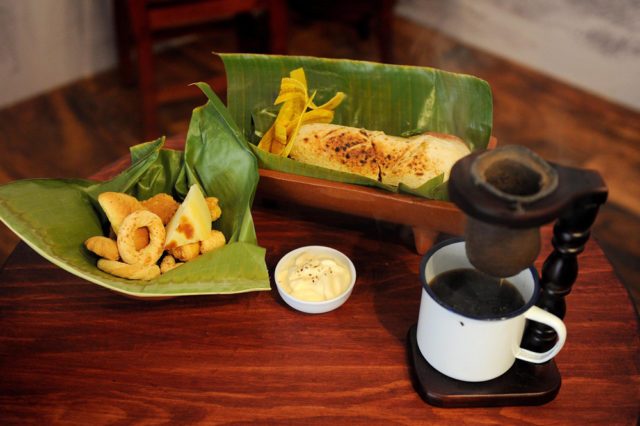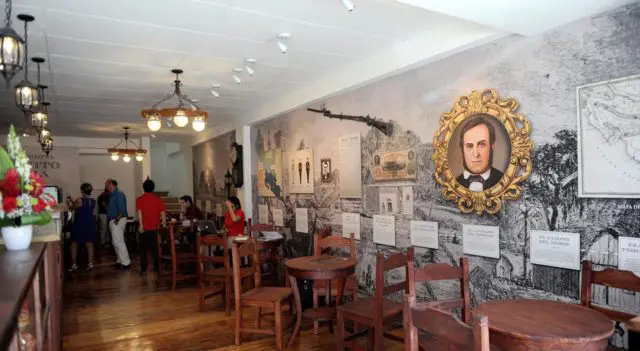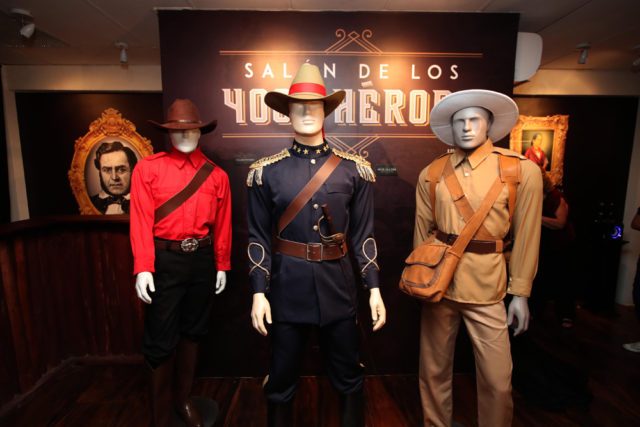Entrance: a cup of coffee blasted with a walk through the roots of Cartago. Strong plate: a peasant saddlebag accompanied by the heroes of 1856, or a sandwich in honor of our ancestors, tasted in a historic Liberian house. For dessert: a cake sweetened with the richest memories of the capital. A good meal does not quarrel with a history lesson. That is what you think when in 1910 Restaurant Cartago added Aguadulce and the cup rests on several newspaper clippings with the inscription “earthquake”. It may also happen in San Jose, when, after trying a cup of coffee in Don Juanito, we go to the second floor of the premises to know more about the campaign of 1856. They are casual, but they remind us of where we come from. “As an entrepreneur, I am interested in giving content to our historical ideas, so that people know them and can keep up,” explains Luis Diego Araya Pochet, owner of Don Juanito Historical Coffee and his brother business, La Tortillería. |

Restaurant 1910. Founded in 1998, the restaurant puts us thinking from the title, what happened in 1910? Those who live after the Ochomogo are most present: on May 4th of that year, the Agua Caliente fault in Cartago caused an earthquake of magnitude 5.9 and left behind all kinds of losses.

The restaurant tables and pictures on the walls tell the story of more than 1,000 people lost their lives. The story is sad, but from the outside the scene is different: the restaurant looks like the story. Painted redwood holds several windows and is surrounded by shrubs and other plants. Inside the galerón, a wood stove warms the diners and helps to prepare tortillas that soon will be cocked.
“Coffee Soul”. If you were in Europe and offered to visit a café in a neocolonial building, in the center of a capital, with affordable prices and a selection of cafes from the seven provinces of the country, would you go?
Café Soul, at the National Theater, is one of the most underrated options in San Jose. Every corner of the cafe feels like a piece of history because the is and the windows have a view towards the rejuvenated Plaza de la Cultura.
The attention is friendly and the dishes (sandwiches, meats) and natural shakes are delicious and at fair prices. The usual clientele is foreigners, but little by little space has invited ticos. A tour of the lobby is enough to ask about the San José led by coffee oligarchs and a guided tour of the theater answers all the questions that may arise. Regardless of your country of origin, the National Theater is one of the best points to start a tourist visit to the center.
“Don Juanito”. In the book The True San Jose (2014), written by the American Michael Miller, it speaks of a capital city in which it is almost impossible to find a good cup of coffee. Fortunately, the three years that have passed since the publication of the book have been good for the gastronomic offer in the center and now, we have Don Juanito.
Fortunately, the three years that have passed since the publication of the book have been good for the gastronomic offer in the center and now, we have Don Juanito.
“The coffee”, inaugurated on March 20 this year, aims to bring its visitors closer to the mid-nineteenth century when Costa Rica began to conform as a Republic.
This story is transmitted on and off the table. The dishes include peasant saddlebags (with rice, beans, meat, and cheese) served on banana leaves, as was done in the country for generations, roasted tamales, and sandwiches.
On the second floor of the premises, you can see a wall with the names of the 4,000 heroes who fought in the National Campaign led by Juanito Mora and replicas of the fighters’ costumes, both domestic and foreign.

“Café Liberia”. located on one of the corners of Calle Real, is a gem of the early 20th Century with wooden floors and walls. On the ceiling, there is a painting of cherubim and one for a chandelier very similar to what we would find in the ceiling of a European neo-colonial theater.
But we are in Liberia, in a historical street full of historic buildings and therefore the windows are wide and the wooden windows weigh more than many doors of the Central Valley.
“La Vasconia”. The bar and restaurant La Vasconia is a historical landmark by itself. The building dates from 1930 and is located just a few blocks from the National Theater, Morazán Park and opposite the old National Library.
Its proximity to the former headquarters of La Nación, on Avenida 1 of San José, was rewarded in the 70s and 80s, with the visit of writers such as Julio Cortázar, Mario Vargas Llosa, Salvador Garmendia, and Isabel Allende (all documented in the book El café of the four of Carlos Morales). But the greatest historical contribution of La Vasconia is not in literature, but in Costa Rican football.
The site contains the collection of photographs of the largest sport in the country, from images of the classic stadiums, parties from the 50s and 60s, to the visit of Pelé or Real Madrid, both in 1959.
